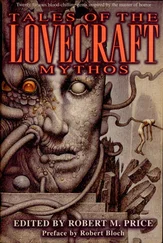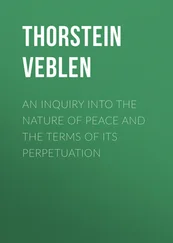Robert Pirsig - Lila. An Inquiry Into Morals
Здесь есть возможность читать онлайн «Robert Pirsig - Lila. An Inquiry Into Morals» весь текст электронной книги совершенно бесплатно (целиком полную версию без сокращений). В некоторых случаях можно слушать аудио, скачать через торрент в формате fb2 и присутствует краткое содержание. Жанр: Современная проза, на английском языке. Описание произведения, (предисловие) а так же отзывы посетителей доступны на портале библиотеки ЛибКат.
- Название:Lila. An Inquiry Into Morals
- Автор:
- Жанр:
- Год:неизвестен
- ISBN:нет данных
- Рейтинг книги:3 / 5. Голосов: 1
-
Избранное:Добавить в избранное
- Отзывы:
-
Ваша оценка:
- 60
- 1
- 2
- 3
- 4
- 5
Lila. An Inquiry Into Morals: краткое содержание, описание и аннотация
Предлагаем к чтению аннотацию, описание, краткое содержание или предисловие (зависит от того, что написал сам автор книги «Lila. An Inquiry Into Morals»). Если вы не нашли необходимую информацию о книге — напишите в комментариях, мы постараемся отыскать её.
Lila. An Inquiry Into Morals — читать онлайн бесплатно полную книгу (весь текст) целиком
Ниже представлен текст книги, разбитый по страницам. Система сохранения места последней прочитанной страницы, позволяет с удобством читать онлайн бесплатно книгу «Lila. An Inquiry Into Morals», без необходимости каждый раз заново искать на чём Вы остановились. Поставьте закладку, и сможете в любой момент перейти на страницу, на которой закончили чтение.
Интервал:
Закладка:
That’s one puzzle cleared up. Another huge one is the mind-matter puzzle.
If the world consists only of patterns of mind and patterns of matter, what is the relationship between the two? If you read the hundreds of volumes of philosophy available on this matter you may conclude that nobody knows — or at least knows well enough to convince everybody else. There is the materialist school that says reality is all matter, which creates mind. There is the idealist school that says it is all mind, which creates matter. There is the positivist school which says this argument could go on forever; drop the subject.
That would be nice if you could, but unfortunately it is one of the most tormenting problems of the physics to which positivism looks for guidance. The torment occurs not because of anything discovered in the laboratory. Data are data. It is the intellectual framework with which one deals with the data that is at fault. The fault is within subject-object metaphysics itself.
A conventional subject-object metaphysics uses the same four static patterns as the Metaphysics of Quality, dividing them into two groups of two: inorganic-biological patterns called matter, and social-intellectual patterns called mind. But this division is the source of the problem. When a subject-object metaphysics regards matter and mind as eternally separate and eternally unalike, it creates a platypus bigger than the solar system.
It has to make this fatal division because it gives top position in its structure to subjects and objects. Everything has got to be object or subject, substance or non-substance, because that’s the primary division of the universe. Inorganic-biological patterns are composed of substance, and are therefore objective. Social-intellectual patterns are not composed of substance and are therefore called subjective. Then, having made this arbitrary division based on substance, conventional metaphysics then asks, What is the relationship between mind and matter, between subject and object?
One answer is to fudge both mind and matter and the whole question that goes with them into another platypus called man. Man has a body (and therefore is not himself a body) and he also has a mind (and therefore is not himself a mind). But if one asks what is this man (which is not a body and not a mind) one doesn’t come up with anything. There isn’t any man independent of the patterns. Man is the patterns.
This fictitious man has many synonyms; mankind, people, the public, and even such pronouns as I, he, and they. Our language is so organized around them and they are so convenient to use it is impossible to get rid of them. There is really no need to. Like substance they can be used as long as it is remembered that they’re terms for collections of patterns and not some independent primary reality of their own.
In a value-centered Metaphysics of Quality the four sets of static patterns are not isolated into separate compartments of mind and matter. Matter is just a name for certain inorganic value patterns. Biological patterns, social patterns, and intellectual patterns are supported by this pattern of matter but are independent of it. They have rules and laws of their own that are not derivable from the rules or laws of substance. This is not the customary way of thinking, but when you stop to think about it you wonder how you ever got conned into thinking otherwise. What, after all, is the likelihood that an atom possesses within its own structure enough information to build the city of New York? Biological and social and intellectual patterns are not the possession of substance. The laws that create and destroy these patterns are not the laws of electrons and protons and other elementary particles. The forces that create and destroy these patterns are the forces of value.
So what the Metaphysics of Quality concludes is that all schools are right on the mind-matter question. Mind is contained in static inorganic patterns. Matter is contained in static intellectual patterns. Both mind and matter are completely separate evolutionary levels of static patterns of value, and as such are capable of each containing the other without contradiction.
The mind-matter paradoxes seem to exist because the connecting links between these two levels of value patterns have been disregarded. Two terms are missing: biology and society. Mental patterns do not originate out of inorganic nature. They originate out of society, which originates out of biology which originates out of inorganic nature. And, as anthropologists know so well, what a mind thinks is as dominated by social patterns as social patterns are dominated by biological patterns and as biological patterns are dominated by inorganic patterns. There is no direct scientific connection between mind and matter. As the atomic physicist, Niels Bohr, said, We are suspended in language. Our intellectual description of nature is always culturally derived.
The intellectual level of patterns, in the historic process of freeing itself from its parent social level, namely the church, has tended to invent a myth of independence from the social level for its own benefit. Science and reason, this myth goes, come only from the objective world, never from the social world. The world of objects imposes itself upon the mind with no social mediation whatsoever. It is easy to see the historic reasons for this myth of independence. Science might never have survived without it. But a close examination shows it isn’t so.
A third puzzle illuminated by the Metaphysics of Quality is the ancient Free Will vs. Determinism controversy. Determinism is the philosophic doctrine that man, like all other objects in the universe, follows fixed scientific laws, and does so without exception. Free will is the philosophic doctrine that man makes choices independent of the atoms of his body.
This battle has been a very long and very loud one because an abandonment of either position has devastating logical consequences. If the belief in free will is abandoned, morality must seemingly also be abandoned under a subject-object metaphysics. If man follows the cause-and-effect laws of substance, then man cannot really choose between right and wrong.
On the other hand, if the determinists let go of their position it would seem to deny the truth of science. If one adheres to a traditional scientific metaphysics of substance, the philosophy of determinism is an inescapable corollary. If everything is included in the class of substance and its properties , and if substance and its properties is included in the class of things that always follow laws, and if people are included in the class everything, then it is an air-tight logical conclusion that people always follow the laws of substance.
To be sure, it doesn’t seem as though people blindly follow the laws of substance in everything they do, but within a Deterministic explanation that is just another one of those illusions that science is forever exposing. All the social sciences, including anthropology, were founded on the bed-rock metaphysical belief that these physical cause-and-effect laws of human behavior exist. Moral laws, if they can be said to exist at all, are merely an artificial social code that has nothing to do with the real nature of the world. A moral person acts conventionally, watches out for the cops, keeps his nose clean, and nothing more.
In the Metaphysics of Quality this dilemma doesn’t come up. To the extent that one’s behavior is controlled by static patterns of quality it is without choice. But to the extent that one follows Dynamic Quality, which is undefinable, one’s behavior is free.
Читать дальшеИнтервал:
Закладка:
Похожие книги на «Lila. An Inquiry Into Morals»
Представляем Вашему вниманию похожие книги на «Lila. An Inquiry Into Morals» списком для выбора. Мы отобрали схожую по названию и смыслу литературу в надежде предоставить читателям больше вариантов отыскать новые, интересные, ещё непрочитанные произведения.
Обсуждение, отзывы о книге «Lila. An Inquiry Into Morals» и просто собственные мнения читателей. Оставьте ваши комментарии, напишите, что Вы думаете о произведении, его смысле или главных героях. Укажите что конкретно понравилось, а что нет, и почему Вы так считаете.











